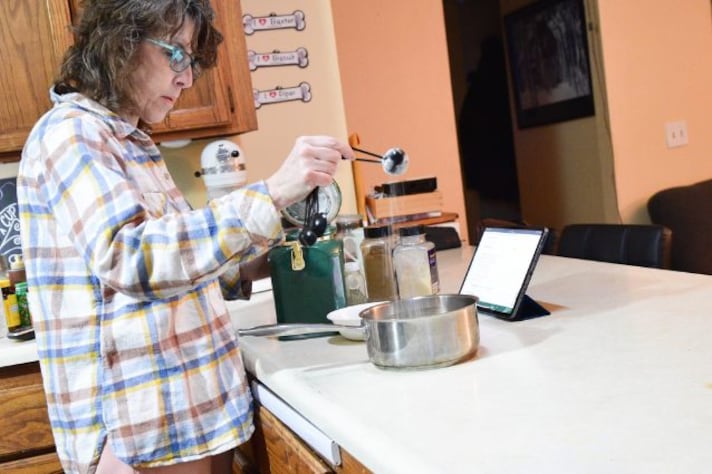
We’ve all been there: you’re excited to try a new recipe, but when you glance at the servings, it’s enough to feed an entire army—or at least a dinner party you’re not hosting. Whether you’re cooking for one, experimenting with a new dish, or simply trying to avoid a fridge full of leftovers, knowing how to cut down a recipe is an essential kitchen skill. But fear not! Scaling down a recipe doesn’t have to feel like solving a math problem. With a few tips and tricks, you can easily adjust any recipe to fit your needs without sacrificing flavor or quality. Let’s dive into the delicious world of recipe downsizing.
Understanding Ratios and Proportions
The first step in cutting down a recipe is all about mastering ratios and proportions. When you’re halving or quartering a recipe, it’s important to keep the relationships between ingredients consistent. This ensures that the flavors and textures remain balanced. For example, if a recipe calls for one cup of sugar and two cups of flour, halving the recipe means using half a cup of sugar and one cup of flour. Simple, right? However, things can get tricky when you’re dealing with ingredients measured in odd fractions or small amounts, like a pinch of salt or a dash of spice.
In these cases, rounding to the nearest convenient measurement is often the best approach. If the recipe calls for 1/4 teaspoon of an ingredient and you’re halving it, you can estimate 1/8 teaspoon. Don’t worry about getting it perfect—cooking is as much an art as it is a science. Trust your instincts, and you’ll likely end up with a dish that’s just as delicious as the original.

How to Adapt Cooking Times and Temperatures
One of the most common challenges when downsizing a recipe is adjusting the cooking time and temperature. Smaller portions often cook faster, so keeping an eye on your dish is crucial. For instance, if you’re roasting a smaller cut of meat or baking a smaller cake, it’s a good idea to start checking for doneness a little earlier than the recipe suggests. Use a meat thermometer or a toothpick to test, rather than relying solely on the clock.
When it comes to temperature, most recipes can be cooked at the same heat as the original. However, if you’re baking something in a smaller pan, the increased surface area might mean your dish browns more quickly. In these cases, you can lower the oven temperature by about 25 degrees Fahrenheit and extend the cooking time slightly, ensuring an even bake without burning.
How to Adjust Seasonings and Spices
Cutting down a recipe also means adjusting the seasonings and spices, which can be a bit of a balancing act. Flavors are more concentrated in smaller quantities, so it’s important not to overdo it. Start by reducing the amounts proportionally, but don’t be afraid to taste and adjust as you go. For example, if you’re halving a recipe that calls for two teaspoons of chili powder, start with one teaspoon and add more if needed.

Salt, in particular, is something to watch. It’s easy to over-salt a smaller portion, so it’s better to err on the side of caution. Remember, you can always add more salt, but you can’t take it out once it’s in. Taste your dish at different stages of cooking, and season gradually until you reach the perfect balance.
How to Convert From Cups to Tablespoons
When downsizing a recipe, you’ll often find yourself converting measurements from larger quantities to smaller ones. Knowing how to do this quickly and accurately can save you a lot of time and hassle. For example, if you need to halve 1/2 cup of sugar, you’ll end up with 1/4 cup. But what if you need to halve 1/3 cup? This converts to approximately 2 tablespoons and 2 teaspoons. A little math might be involved, but once you get the hang of it, it becomes second nature.
Another useful tip is to have a good set of measuring spoons and cups on hand, as they make these conversions easier. If you’re ever in doubt, plenty of online conversion tools can help you figure out tricky measurements. With practice, you’ll become a pro at adjusting quantities without breaking a sweat—or breaking out the calculator.

Dealing with Eggs and Other Challenging Ingredients
Eggs can be one of the trickiest ingredients to adjust when cutting down a recipe, especially if you’re halving a recipe that calls for just one egg. In this case, you can whisk the egg and use half of it, saving the other half for another use. If you’re dealing with a recipe that calls for multiple eggs, simply scale down the number accordingly. For odd numbers, round up or down based on the consistency you’re aiming for.
For ingredients like yeast in bread recipes or baking powder in cakes, it’s important to maintain the right chemical balance. Cutting down too much can affect the rise and texture of your dish. In these cases, reducing the recipe in smaller increments (like thirds) rather than halves may yield better results.
The Final Touch
The most important step in downsizing a recipe is to taste as you go. Since flavors can behave differently in smaller quantities, don’t be afraid to make adjustments. If the dish tastes a little flat, add a squeeze of lemon or a dash of vinegar to brighten it up. If it’s too salty, a bit more of the base ingredient (like potatoes or rice) can help balance things out.
Remember, cooking is a creative process. Downsizing a recipe gives you the opportunity to experiment and tailor dishes to your personal taste. With a bit of practice, you’ll soon be able to adapt any recipe to the perfect size, ensuring that your meals are both delicious and just the right amount.
;Resize,width=767;)
